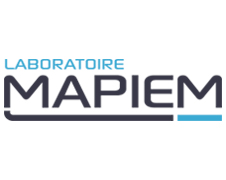Interphases in model epoxy/glass fiber composites : correlation between macro/nano properties and wet aging
Interphases dans des composites époxy/fibres de verre modèles : corrélation entre les propriétés macro/nano et veillissement humide
Résumé
This thesis work focuses on understanding the influence of sizing chemistry on the interfacial properties of composites in the initial state and on their durability in hydrothermal environments. In this study, model interphases between E-glass fibres and an epoxy matrix have been designed and studied in terms of adhesion and mechanical strength from the nano to the macroscale. Two interphases were consisted of a reactive sizing comprising either an APTMS silane coupling agent alone or a DGEBA pre-polymer film former with the APTMS agent. A third interphase is formed of a non-reactive sizing containing a MTES silane combined with a BGEA film former (neutralized DGEBA). The sizings of fibres were evidenced by SEM/AFM observations and XPS spectroscopy. The characterization of the model composites by AFM in nanomechanical mode, micromechanical and thermomechanical tests revealed the effect of the sizing chemistry on the fibre/matrix interfacial properties. The interfacial strength is higher for composites reinforced with APTMS and APTMS-DGEBA sizing fibres than those prepared with MTES-BGEA sizing fibres. The hydrothermal ageing study of the different systems showed that the reactive sizing seems to better protect the fibre/matrix interface in the presence of water. The non-reactive sizing weakens the interfacial resistance, but it would delay the hydrolysis of the epoxy matrix by a "buffer" effect.
Ces travaux de thèse portent sur la compréhension de l’influence de la chimie des ensimages sur les propriétés interfaciales des composites époxy/verre à l’état initial, ainsi que sur leur durabilité en milieu hydrothermal. Dans cette étude des interphases modèles entre des fibres de verre E et une matrice époxy ont été élaborées puis étudiées en termes d'adhésion et de résistance mécanique de l'échelle nano à l'échelle macro. Deux types d’interphases sont constituées d'un ensimage réactif comprenant soit un agent de couplage silane APTMS seul, soit un agent filmogène pré-polymère DGEBA avec l’agent APTMS. Un troisième type d’interphase est formée d’un ensimage non réactif contenant un silane MTES et un agent filmogène BGEA (DGEBA neutralisé). Les ensimages des fibres ont été mis en évidence par observations SEM/AFM et spectroscopie XPS. La caractérisation des composites modèles par l’AFM en mode nano-mécanique, les tests micromécaniques et thermomécaniques ont révélé l'effet de la chimie d'ensimage sur les propriétés interfaciales fibres/matrice. La résistance interfaciale est plus importante pour les composites renforcés avec des fibres ensimées APTMS et APTMS-DGEBA que pour ceux préparés avec des fibres ensimées MTES-BGEA. L’étude de vieillissement hydrothermique des différents systèmes a montré que les ensimages réactifs semblent mieux protéger l’interface fibre/matrice en présence d’eau. L’ensimage non réactif affaiblit la résistance interfaciale mais permettrait de retarder l’hydrolyse de la matrice époxy par un effet « tampon ».
| Origine | Version validée par le jury (STAR) |
|---|

